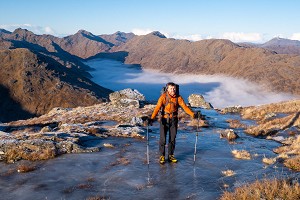
In their own description, Mountain Equipment (ME) don't actually use the phrase 'belay jacket' when referring to the Citadel, although I suspect that is what most UK climbers would buy it for. I've outlined before what I think a belay jacket is (see this article): basically a jacket you pull out of your pack and put on to keep you warm while belaying. It has to go over everything you are climbing in – shell, slings, harness, gloves – and then keep you warm. I think a good belay jacket has to be as simple as possible to put on; if it's a hassle you are less likely to use it.
"Mountain Equipment don't call the Citadel a 'belay jacket' but I suspect that is what most UK climbers would buy it for..."The Citadel ticks most but not all of those boxes; a couple of features that make it a superb synthetic jacket for people living or working in very cold conditions slightly detract from its ease of use as a pure belay jacket. You probably need to be grinding it out in some miserable weather to notice these, –23 in the Scandinavian mid-winter is a tough teacher, but getting pummelled by spindrift for an hour in a Nevis gully is no less a test.
So, firstly, the jacket is warm – with 200g per square metre of Primaloft One in the body and 170g in the arms, the jacket has more insulation than the Patagonia DAS and the same amount as the Rab Photon Belay (Rab use the recycled but supposedly slightly less insulating Primaloft Eco). Obviously the amount of insulation isn't the only factor in warmth but it is a central one. Additionally ME use their EXL system, basically elasticated stitching in the internal quilting that pulls the jacket around you, eliminating dead space for drafts to move around. I'm a big fan of this having used an ME sleeping bag with the EXL system for a decade and feel it really added to the bag's warmth. It makes the jacket very snug to wear.
"ME's EXL system, basically elasticated stitching in the internal quilting that pulls the jacket around you, eliminates dead space for drafts to move around..."
On the outside, ME use Drilite Loft II: a light, windproof and highly water resistant fabric. The seams aren't taped but I found rain just beaded up and rolled off the jacket impressively. Considering that the jacket will mostly be used in sub-zero temps, it has no problem dealing with wet snow. Dry snow simply slides off. The hood is also great, giving loads of protection and warmth and fits well both when wearing a helmet and not. It is more ambitious than the hood on my DAS, having a wired peak that gives good protection.
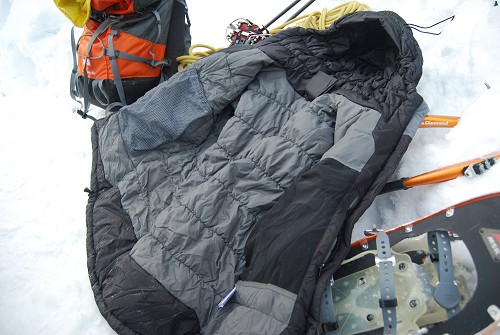
Belay jackets can still get wet inside from pulling them over damp shells, but here the Citadel's insulation, Primaloft One, is the stuff to have. It is Primaloft's top of the range insulation, and is claimed to be the best at dealing with damp. I have got the Citadel a little damp on the inside wearing it over a wet shell, but it seemed to keep its warmth and dried quickly once out of the rain. The only downside to all that protection and warmth is that the jacket is no lightweight at a stated 900g (mine is actually a little heavier than the stated weight, at 943g).
The jacket has loads of pockets: two on the chest, two fleece-lined hand-warmers, a big internal zipped pocket and an internal mesh pocket sized perfectly to fit a 1 litre Nalgene bottle. These internal pockets are one of the features that make me feel the Citadel is designed with wearing for longer periods than just belay sessions in mind. Carrying a water bottle inside your insulation sounds like an Everest summit day thing, rather than for belaying for hours as your mate scrapes his way up his first Scottish tech 7 pitch.
Having used a DAS for a decade, what I really missed with the Citadel is the big mesh pouches on the inside of the DAS that you drop your lead gloves into to warm up and dry a little while you belay in your mitts. I can get my lead gloves into the Citadel's internal mesh pockets, but frankly it's a struggle you could do without while trying to re-warm your fingers. It feels like that is not what they were really designed for.
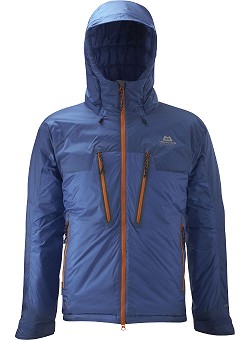
Mountain Equipment Citadel Jacket
- Weight: 900g
- Sizes: S - XL
- 'Drilite' Loft II outer; totally windproof and highly water resistant
- Primaloft One insulation (200g body and 170g arms)
- Fully adjustable helmet compatible hood with wired visor
- 2-way moulded centre front zip with rear insulated baffle
- 2 zipped hand warmer pockets and 2 napoleon chest pockets
- 'EXL' system incorporated into hood and back of jacket
- Internal mesh water bottle holder and zippered accessories pocket
- 'Drilite' Loft inner hem and hood lining
- Adjustable cuffs and dual tether hem drawcord
ME says the Citadel is sized to take into account wearing it over a shell and other layers, hence I picked a medium to review. It is indeed easy enough to pull on over my shell and mid-layers, but it is tight around the waist when wearing a harness with gear on it. In particular, my ice screw racks disagree with the jacket's fit. If you tend to carry a lot of climbing gear, you might want to consider sizing up. Finally, and slightly bizarrely, the Citadel comes with a stuff sack that it will not fit into. It's a nice little stuff sack, just not for the jacket that it comes with! I first wondered if just mine was the wrong size, but it seems others have noticed this too.
Note from Mountain Equipment
The issue of the stuff sacs not being large enough is one we were aware of and have been having fixed. All future jackets should have an appropriately sized sac. If any existing Citadel owners have a stuff sac that is too small they should get in touch with us and we'll do our best to sort them out with one that fits.
Overall
The Citadel is a wonderfully protective and warm jacket for harsh weather. There is clearly demand for very warm coats both from people like camera crew, who sometimes stand around doing little in lousy weather and from climbers wanting belay jackets. I do wonder if the Citadel is, from the climber's perspective, very slightly over-engineered in order for it to also satisfy that first group of customers? I would like to see bigger internal pockets for drying gloves, and a more big-glove friendly wrist design, but ultimately, once zipped inside, the Citadel will protect you better than most jackets from the nastiest weather you can imagine.
About Toby Archer
Toby is based in Finland. He describes himself as: "a writer and researcher specialising in international security politics; finally no longer a PhD student; hopeless but enthusiastic climber; part-time gear reviewer; keen multi-role cyclist; idealist and cynic"
Climbing keeps him from getting too depressed about politics. He blogs about both at:
Light from the North - chilled thoughts from the top of Europe.



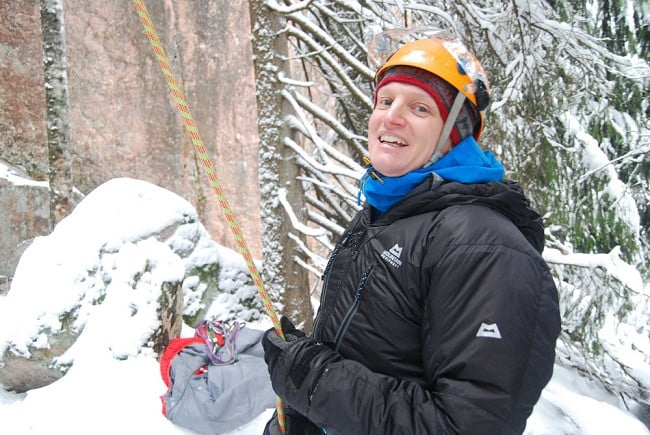

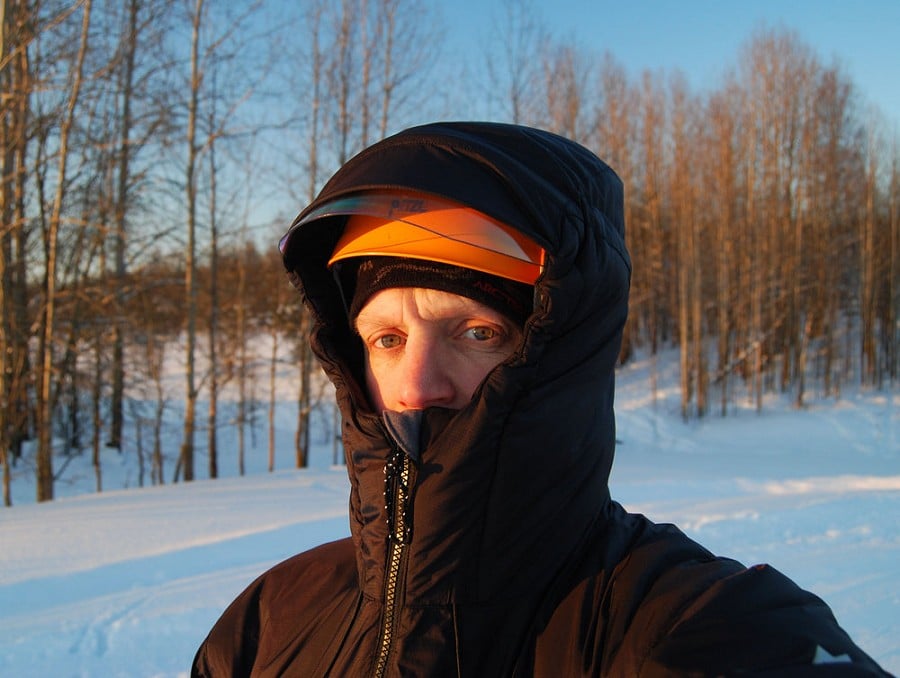
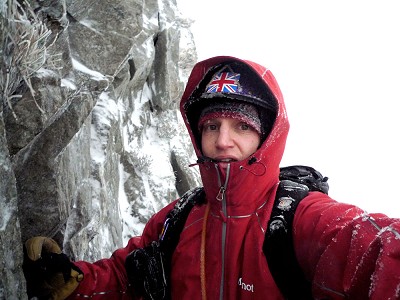
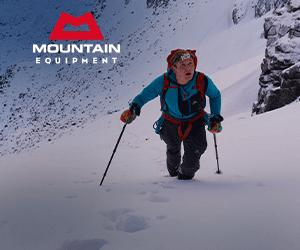
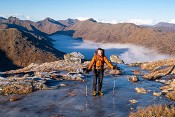




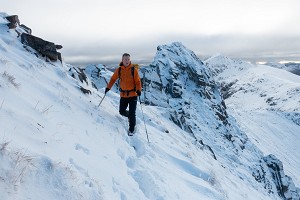

Comments